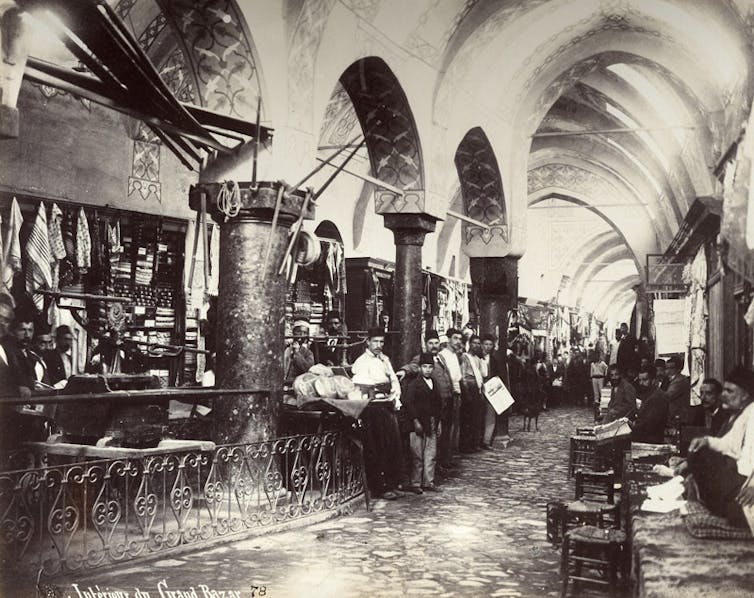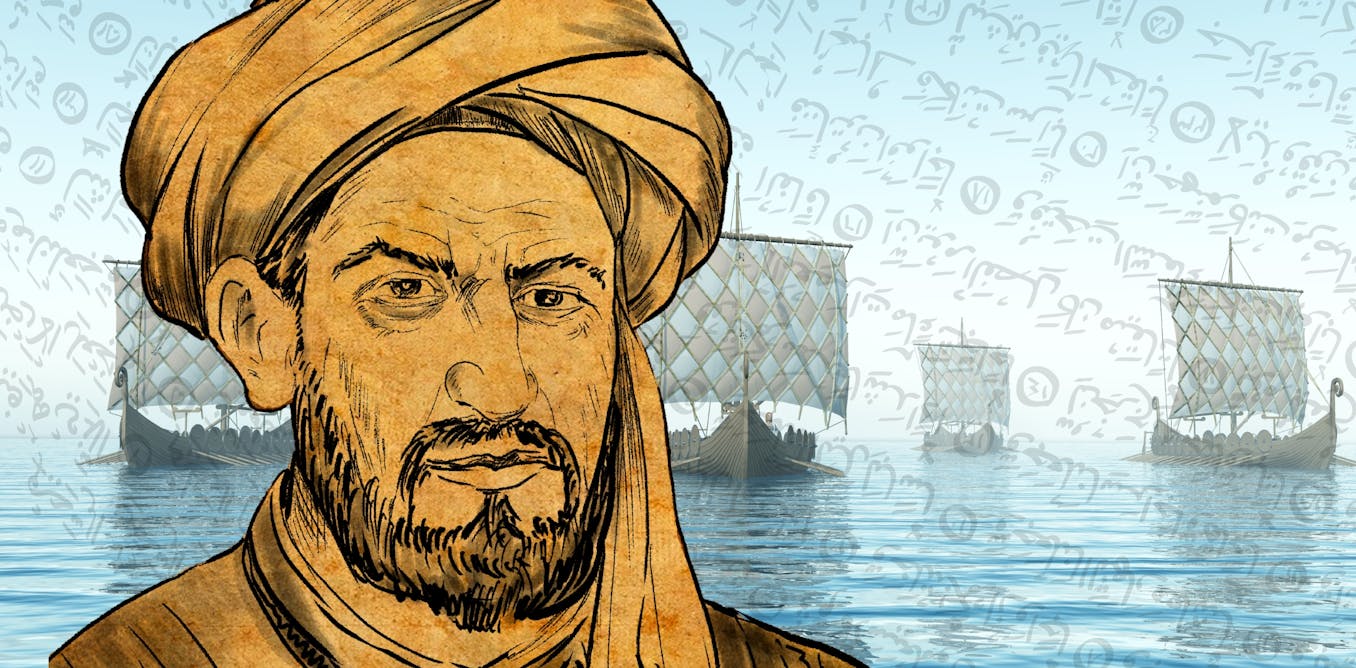On August 27 1761, a Danish explorer started a small riot in the grand bazaar of Constantinople (present-day Istanbul). Frederik Christian von Haven had been tasked with buying Arabic and Persian manuscripts for the Danish royal library as part of an expedition sent to the Middle East by Danish king Frederik V.
Von Haven was confident – perhaps overly so – in his abilities as a book collector. But on this particular day, things went wrong.
When a Turkish bookseller offered him a book he didn’t like the look of, Von Haven tossed it aside dismissively. At this, the booksellers at the bazaar turned on him and came together to physically remove him from the area – trampling his hat in the process. The indignant explorer was left feeling disgruntled about the treatment he had endured.
The incident at the bazaar is a dramatic interlude in the diary kept by Von Haven throughout his journey with the other members of Denmark’s royal expedition. It showcases Von Haven’s arrogance, both as a book collector and as a European in Constantinople. But what does it have to do with the study of the Viking Age?
The study of Vikings
The sources that inform our knowledge of the Vikings come in many forms and languages. Among them are a series of geographical and eyewitness texts written in Arabic which discuss aspects of the Viking world. They describe not only the Vikings at home in Scandinavia or raiding the coastline of al-Andalus, but also Viking traders and settlers across what is now Ukraine and Russia, where they came to be known as Rus.
Arguably the most famous Arabic source on the Rus is the travel account of Ahmad ibn Fadlan, a diplomat of sorts dispatched from Baghdad to Russia’s Volga river in AD921. Immortalised by the actor Antonio Banderas in The 13th Warrior (1999), Ibn Fadlan encountered a band of Rus slavetraders during his journey, and observed a funeral ceremony on the banks of the Volga.
State Historical Museum Russia/Wiki Commons
Ibn Fadlan’s first-hand account of the Rus and their funerary rituals has secured his reputation as an important source for the study of ritual and belief across the Viking world. Nowhere else do we encounter eyewitness insight into this kind of Viking funerary ritual.
The fullest surviving manuscript copy of Ibn Fadlan’s travel account was discovered in 1923 by the historian Ahmet Zeki Velidi Togan. Before that, European orientalists and Viking historians had spent just over a century piecing together this travelogue from the work of other geographers who had quoted him.
Using geographer Yaqut al-Hamawi’s 13th-century Arabic encyclopedia Dictionary of Countries, which contained excerpts of Ibn Fadlan’s travel account, a Danish orientalist published an essay in 1814 which outlined a series of Arabic and Persian descriptions of medieval Scandinavia and Russia.
The author, Jens Lassen Rasmussen, had used manuscripts in Copenhagen’s royal library to introduce Ibn Fadlan to Europe. As a Dane writing about historic accounts of people he saw as his “forefathers”, Rasmussen understood Ibn Fadlan’s Rus to be Scandinavian rather than Slavic.
While other researchers, then and since, have argued the opposite in terms of the identity of the Rus, cultural parallels and trade networks have led Viking historians to consider the Rus to have Scandinavian connections.
Von Haven’s role
In the wake of Von Haven’s book-buying brawl in 1761, his Arabic teacher, a Syrian man named François Barout, persuaded him that it would be wiser to stay at home and let books come to him, rather than risk a repeat experience.

Jean Pascal Sébah via Wiki Commons
Under Barout’s supervision, booksellers visited the Dane with curated selections of manuscripts for him to browse. This was how Al-Hamawi’s 13th-century encyclopedia made its way into Von Haven’s possession – he bought it in a two-volume set for a relatively low price.
Al-Hamawi’s Dictionary of Countries did not immediately stand out as an important acquisition for the Danish royal library. Indeed, Von Haven only bought the manuscripts because he knew Leiden University had a copy, and felt Copenhagen should follow suit. But half a century later, it was these manuscripts which allowed Rasmussen to encounter Ibn Fadlan, and present him as a source which might interest Norse antiquarians.
Ibn Fadlan’s account was quickly translated into other European languages, and as antiquarians strengthened their interest in the Vikings, Ibn Fadlan gained a reputation as the eyewitness observer of a “Norse” ritual.
Viking scholarship moved on quickly after the interest sparked by Rasmussen’s initial essay. The Copenhagen manuscripts purchased by Von Haven were soon forgotten in favour of other, more useful manuscript copies and more up-to-date research. But without the boorish behaviour of a Danish visitor to Constantinople’s grand bazaar, Ibn Fadlan’s account of Rus on the Volga would not have surfaced in Denmark in time for a surge in interest in Arabic sources on the Vikings.

Looking for something good? Cut through the noise with a carefully curated selection of the latest releases, live events and exhibitions, straight to your inbox every fortnight, on Fridays. Sign up here.



